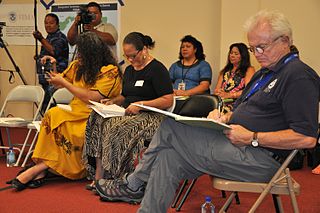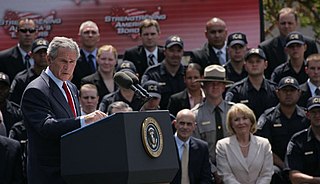
Public relations (PR) is the practice of managing and disseminating information from an individual or an organization to the public in order to influence their perception. Public relations and publicity differ in that PR is controlled internally, whereas publicity is not controlled and contributed by external parties. Public relations may include an organization or individual gaining exposure to their audiences using topics of public interest and news items that do not require direct payment. The exposure is mostly media-based, and this differentiates it from advertising as a form of marketing communications. Public relations aims to create or obtain coverage for clients for free, also known as earned media, rather than paying for marketing or advertising also known as paid media. But in the early 21st century, advertising is also a part of broader PR activities.
Within the realm of communication studies, organizational communication is a field of study surrounding all areas of communication and information flow that contribute to the functioning of an organization. Organizational communication is constantly evolving and as a result, the scope of organizations included in this field of research have also shifted over time. Now both traditionally profitable companies, as well as NGO's and non-profit organizations, are points of interest for scholars focused on the field of organizational communication. Organizations are formed and sustained through continuous communication between members of the organization and both internal and external sub-groups who possess shared objectives for the organization. The flow of communication encompasses internal and external stakeholders and can be formal or informal.

A rumor, or rumour, is "a tall tale of explanations of events circulating from person to person and pertaining to an object, event, or issue in public concern."
An opinion poll, often simply referred to as a survey or a poll, is a human research survey of public opinion from a particular sample. Opinion polls are usually designed to represent the opinions of a population by conducting a series of questions and then extrapolating generalities in ratio or within confidence intervals. A person who conducts polls is referred to as a pollster.
Impression management is a conscious or subconscious process in which people attempt to influence the perceptions of other people about a person, object or event by regulating and controlling information in social interaction. It was first conceptualized by Erving Goffman in 1959 in The Presentation of Self in Everyday Life, and then was expanded upon in 1967.
Marketing communications refers to the use of different marketing channels and tools in combination. Marketing communication channels focus on how businesses communicate a message to its desired market, or the market in general. It is also in charge of the internal communications of the organization. Marketing communication tools include advertising, personal selling, direct marketing, sponsorship, communication, public relations, social media, customer journey and promotion.
Communication design is a mixed discipline between design and information-development concerned with how media communicate with people. A communication design approach is concerned with developing the message and aesthetics in media. It also creates new media channels to ensure the message reaches the target audience. Due to overlapping skills, some designers use graphic design and communication design interchangeably.
A command hierarchy is a group of people who carry out orders based on others' authority within the group. It can be viewed as part of a power structure, in which it is usually seen as the most vulnerable and also the most powerful part.
Journalistic ethics and standards comprise principles of ethics and good practice applicable to journalists. This subset of media ethics is known as journalism's professional "code of ethics" and the "canons of journalism". The basic codes and canons commonly appear in statements by professional journalism associations and individual print, broadcast, and online news organizations.

A graphic designer is a professional who practices the discipline of graphic design, either within companies or organizations or independently. They are professionals in design and visual communication, with their primary focus on transforming linguistic messages into graphic manifestations, whether tangible or intangible. They are responsible for planning, designing, projecting, and conveying messages or ideas through visual communication. Graphic design is one of the most in-demand professions with significant job opportunities, as it allows leveraging technological advancements and working online from anywhere in the world.
Particracy, also known as partitocracy, partitocrazia or partocracy, is a form of government in which the political parties are the primary basis of rule rather than citizens or individual politicians.

Internal communications (IC) is the function responsible for effective communications among participants within an organization. The scope of the function varies by organization and practitioner, from producing and delivering messages and campaigns on behalf of management, to facilitating two-way dialogue and developing the communication skills of the organization's participants.
In politics, a dog whistle is the use of coded or suggestive language in political messaging to garner support from a particular group without provoking opposition. The concept is named after ultrasonic dog whistles, which are audible to dogs but not humans. Dog whistles use language that appears normal to the majority but communicates specific things to intended audiences. They are generally used to convey messages on issues likely to provoke controversy without attracting negative attention.
Political campaign staff are the group of people who formulate and implement the strategy of a political campaign. Campaign staffs are generally composed both of unpaid volunteers and paid employees of either the campaign itself or a related political party. The staff may include political consultants who provide advice and assistance to a campaign.
Strategic communication can mean either communicating a concept, a process, or data that satisfies a long-term strategic goal of an organization by allowing facilitation of advanced planning, or communicating over long distances usually using international telecommunications or dedicated global network assets to coordinate actions and activities of operationally significant commercial, non-commercial and military business or combat and logistic subunits. It can also mean the related function within an organization, which handles internal and external communication processes. Strategic communication can also be used for political warfare.
Political literacy is a set of abilities considered necessary for citizens to participate in a society's government.
BLUF is the practice of beginning a message with its key information. This provides the reader with the most important information first. By extension, that information is also called a BLUF. It differs from an abstract or executive summary in that it is simpler and more concise, similar to a thesis statement, and it resembles the inverted pyramid practice in journalism.

Political communication is a subfield of communication and political science that is concerned with how information spreads and influences politics, policy makers, the news media, and citizens. Political Communication is an international journal, published quarterly, that features cutting-edge theory-driven empirical research at the intersection of politics and communication. Since the advent of the World Wide Web, the amount of data to analyze has exploded and researchers are shifting to computational methods to study the dynamics of political communication. In recent years, machine learning, natural language processing, and network analysis have become key tools in the subfield. It deals with the production, dissemination, procession and effects of information, both through mass media and interpersonally, within a political context. This includes the study of the media, the analysis of speeches by politicians, those that are trying to influence the political process, and the formal and informal conversations among members of the public, among other aspects. The media acts as a bridge between government and public. Political communication can be defined as the connection concerning politics and citizens and the interaction modes that connect these groups to each other. Whether the relationship is formed by the modes of persuasion, Pathos, Ethos or Logos.
Reinforcement theory is a limited effects media model applicable within the realm of communication. The theory generally states that people seek out and remember information that provides cognitive support for their pre-existing attitudes and beliefs. The main assumption that guides this theory is that people do not like to be wrong and often feel uncomfortable when their beliefs are challenged.
Employee silence refers to situations where employees withhold information that might be useful to the organization of which they are a part, whether intentionally or unintentionally. This can happen if employees do not speak up to a supervisor or manager.
Within organizations people often have to make decisions about whether to speak up or remain silent - whether to share or withhold their ideas, opinions, and concerns ... [The problem is that] in many cases, they choose the safe response of silence, withholding input that could be valuable to others or thoughts that they wish they could express.
— Frances J. Milliken and Elizabeth Wolfe Morrison, Shades of Silence: Emerging Themes and Future Directions for Research on Silence in Organizations




